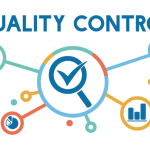Quality 5.0 marks a transformative shift in quality management, redefining excellence through the synergy of human intelligence and machine capabilities. Unlike previous iterations that focused on inspection, process control, or digital enhancements, this new paradigm integrates artificial intelligence, robotics, and data-driven decision-making with human creativity, … [Read more...] about Quality 5.0 – Redefining Excellence In Human-Machine Collaboration Age
Quality
Mastering Non-Conformance Reports and Inspection Mentality: Practical Advice for Quality Managers
This podcast episode addresses a common frustration in quality management—getting upper management to recognize and support meaningful quality improvements. A listener asks how to change a company’s stagnant approach to quality when leadership believes in doing things the way they always have. The hosts emphasize that quality professionals often bear responsibility without … [Read more...] about Mastering Non-Conformance Reports and Inspection Mentality: Practical Advice for Quality Managers
What Is Pre-Shipment Inspection for Quality?
A Pre-Shipment Inspection (PSI) is an essential step in quality control, conducted once production is complete to verify that goods meet contractual obligations before they are shipped. This process benefits both buyers and suppliers by ensuring product compliance, minimizing disputes, and reducing costly logistics issues such as returns or recalls. PSI includes various checks, … [Read more...] about What Is Pre-Shipment Inspection for Quality?
SaaS Industry Trends Report 2024: A Comprehensive Overview-Including Quality Management
The SaaS industry remains a dominant force in the tech ecosystem, with over $207 billion in venture capital invested in 2024 and a total market valuation of approximately $273 billion. Despite continued growth, businesses are facing rising software costs, as seen with LinkedIn doubling its Career Pages pricing and Zendesk increasing user fees by 13%. This trend is particularly … [Read more...] about SaaS Industry Trends Report 2024: A Comprehensive Overview-Including Quality Management
The Most Popular Tools For Data-Driven Decisions In Business
Data-driven decision-making has become a critical component of modern business operations, with an expanding range of tools designed to process, analyze, and visualize complex datasets. Organizations use statistical analysis tools to interpret data effectively, ensuring accurate forecasting and strategic planning. Excel remains a staple for general analysis, while Python and R … [Read more...] about The Most Popular Tools For Data-Driven Decisions In Business
Top 9 Audit Findings in Risk Management: Challenges and Action Plan
Risk management in 2025 faces increasing complexity, with audit reports repeatedly identifying critical weaknesses that leave organizations vulnerable. One major challenge is the inadequate integration of ESG (Environmental, Social, and Governance) risks into corporate risk models. Many companies fail to conduct ESG stress testing or incorporate these factors into their … [Read more...] about Top 9 Audit Findings in Risk Management: Challenges and Action Plan
The Ultimate Guide to Understanding Quality Assurance vs. Quality Control
Quality assurance (QA) and quality control (QC) are often confused but serve distinct roles in ensuring product and service quality. QA is a proactive approach that focuses on process optimization and defect prevention, incorporating customer feedback and continuous evaluation to maintain high standards. It extends beyond pre-production planning to monitor the entire product … [Read more...] about The Ultimate Guide to Understanding Quality Assurance vs. Quality Control
Quality Control in Manufacturing: Methods, Best Practices, and Implementation
Quality control in manufacturing is a structured approach to monitoring production processes to ensure that final products meet specified standards. It involves methods such as in-process inspections, material testing, equipment control, and statistical sampling. These techniques allow manufacturers to identify and correct defects before products reach customers. While quality … [Read more...] about Quality Control in Manufacturing: Methods, Best Practices, and Implementation
An approach to integrate Artificial Intelligence in ISO 9001-based quality management systems
The article explores a structured approach to integrating Artificial Intelligence (AI) into ISO 9001-based quality management systems (QMS), emphasizing the importance of aligning three key frameworks: Annex SL, ISO 9001, and ISO/IEC 42001. With the publication of ISO/IEC 42001:2023, organizations now have a dedicated standard for AI management systems, providing structured … [Read more...] about An approach to integrate Artificial Intelligence in ISO 9001-based quality management systems
ISO 9001:2025 Revision – What you need to know
The upcoming ISO 9001:2026 revision is a crucial update for quality management professionals, aiming to reflect significant changes in business, technology, and global challenges since the last major update in 2015. The revision process is currently in progress, with Working Group 29 reviewing feedback on the first Committee Draft (CD) and preparing for the Draft International … [Read more...] about ISO 9001:2025 Revision – What you need to know
14 Examples of Quality Metrics in Manufacturing for Product Quality Assurance
Measuring quality metrics in manufacturing is essential for identifying inefficiencies and improving product standards. These metrics are divided into process metrics (evaluating production efficiency), product metrics (assessing defect rates and customer satisfaction), maintenance metrics (ensuring equipment reliability), and supplier quality metrics (monitoring material … [Read more...] about 14 Examples of Quality Metrics in Manufacturing for Product Quality Assurance
AI in (Quality) Procurement
Artificial intelligence is transforming procurement by automating processes, analyzing large datasets, and generating actionable insights. Narrow AI, the primary form used in procurement, enables spend classification, vendor risk assessment, quality control, contract analysis, and supplier discovery. Machine learning refines data categorization, while natural language … [Read more...] about AI in (Quality) Procurement
The ISO 9001:2015 Quality Management System Standard: Companies’ Drivers, Benefits and Barriers to Its Implementation
A survey of 493 ISO 9001-certified Italian companies reveals that the standard is widely recognized, especially in northern Italy, where economic development is highest. The study finds that most businesses have been certified for over seven years, indicating a long-standing quality culture. Companies transitioning from ISO 9001:2008 to the 2015 version acknowledge its emphasis … [Read more...] about The ISO 9001:2015 Quality Management System Standard: Companies’ Drivers, Benefits and Barriers to Its Implementation
Revolutionizing procurement: Leveraging data and AI for strategic advantage
Procurement is undergoing a significant transformation, with data and AI enabling organizations to optimize sourcing strategies, predict market fluctuations, and automate supplier management. AI-driven tools help both quality and procurement teams analyze spend, forecast demand, and assess external risks like price volatility or supply chain disruptions. Digital dashboards and … [Read more...] about Revolutionizing procurement: Leveraging data and AI for strategic advantage
How to Identify Non-Conformance at Work
Non-conformance in the workplace occurs when processes or products fail to meet specified requirements, leading to inefficiencies, safety risks, or regulatory violations. It can be categorized into minor and significant non-conformances, with minor issues typically involving isolated documentation or procedural errors. In contrast, major non-conformances include critical … [Read more...] about How to Identify Non-Conformance at Work
A Management System for Data Quality
A Data Quality Management System (DQMS) offers organizations a structured approach to managing data quality, adapting ISO 9001 principles to the data domain. While ISO 27001 is widely recognized for information security, and ISO 8000 focuses on specific aspects of data quality, ISO 9001 provides a general framework that can be effectively applied to ensure high data quality … [Read more...] about A Management System for Data Quality
The Quality Manager as Risk Manager
Risk management is essential for organizational success, as it helps businesses anticipate and respond to potential threats before they cause significant disruptions. The discussion highlights that risk can be both internal, such as staffing shortages or process failures, and external, like economic downturns or cybersecurity breaches. A quality manager’s role extends beyond … [Read more...] about The Quality Manager as Risk Manager
Cost of Quality: Cost of Conformance & Cost of Nonconformance
The Cost of Quality (CoQ) represents the total investment a company makes to ensure products meet quality standards and the expenses incurred when quality failures occur. CoQ is divided into two primary categories: the cost of conformance, which includes prevention and appraisal costs, and the cost of non-conformance, which covers internal and external failure costs. Businesses … [Read more...] about Cost of Quality: Cost of Conformance & Cost of Nonconformance
Understanding How Quality Spreads in Manufacturing
In manufacturing, every operation and subassembly contributes to the quality of the final product. Understanding how these attributes are transmitted throughout production is essential for identifying quality issues and implementing improvements. Quality transmissibility helps manufacturers analyze the relationship between individual subassemblies and the overall product, … [Read more...] about Understanding How Quality Spreads in Manufacturing
How to organize a training program for ISO 9001
Organizing a successful ISO 9001 training program requires a structured approach that aligns with QMS objectives and compliance requirements. ISO 9001 emphasizes competency-based training, ensuring employees have the knowledge, skills, and experience to maintain high-quality standards. Clauses 5.3, 7.1.6, and 7.2 outline the need for defining roles, establishing competence … [Read more...] about How to organize a training program for ISO 9001




















